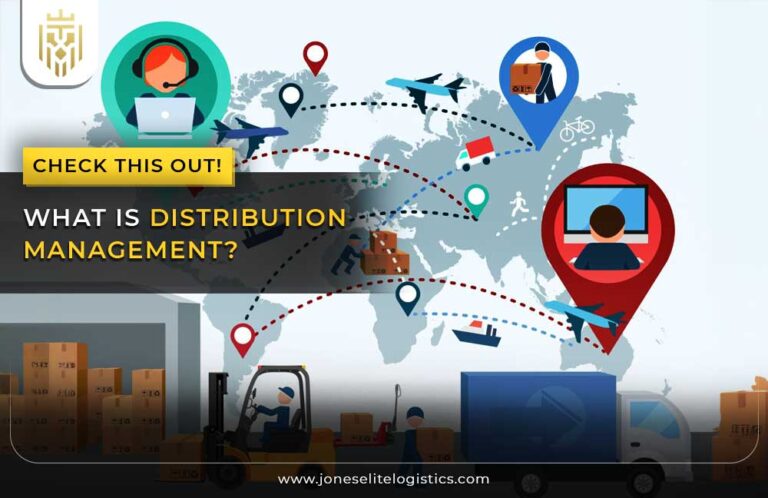What is Warehouse Operations?
Warehouse operation is defined as the business activities pertaining to the proper conduct of warehouse functions starting from the receipt of goods up to the dispatch of goods. This ranges from receiving, put-away, storage, picking, packing, and shipping. This is the reason why proper implementation in warehouse operation management ensures that the whole process of putting and retrieving inventory is accurate, fast, as well as orderly in response to customer necessities and budget constraints. Properly operating a warehouse means efficiently handling every step.

Why are Warehouse Operations Important?
Warehouse operations are vital for various reasons, including effective inventory management, which ensures accurate counts to prevent stock outs or overstocking, thereby enhancing customer satisfaction. Order fulfilment encompasses receiving shipments, sorting, and shelving inventory to enable timely deliveries. Additionally, packing and shipping focus on maintaining order accuracy while boosting efficiency. Efficient labour management is crucial, alongside regular reporting to track operations. Warehouse operators and warehouse forklift operators must adhere to the standard operating procedures warehouse to ensure everything runs smoothly. Lastly, seamless returns and restocking processes are essential for maintaining a smooth supply chain and customer satisfaction.
How do Warehouse Operations work?
The manner in which warehouse operations can be organized is through the formulation of processes. Receipt of goods is done, inspected for any damage, and taken to the right storage area for stocking. Stock is then controlled and the orders are then for the pick and pack processes. The role of a warehouse operator is crucial here. Operations in a warehouse depend on workers who understand the layout and procedures, led by a warehouse operations manager. The warehouse operation manager salary varies, but the role demands attention to detail and efficient planning. Last, the packed goods are transported to the intended places or where they will be sold. All functional steps are made carefully and every next move depends on the previous one and requires coordination.
Receiving:
Receiving entails a process of accepting goods led by a warehouse and operations manager, checking the quality and quantity of received goods against invoices, and then updating the records of stock. The standard operating procedures for warehouse receiving ensure that the right and intact products are added to the stock, which sets the platform for efficient warehouses.
Put-Away:
Put-away is the movement of receipted goods to the appropriate storage points. This task involves a proper arrangement of the items to fit in the available space since most of the picking is done by utilizing a pick path. The role of a warehouse forklift operator is essential in this stage. Implementing proper warehouse operations management in put-away helps improve overall efficiency in warehouse operations.
Storage:
Storage can be defined as arranging the products in a systematic manner within the premises of the warehouse. Organized storage systems enhance the layout of storage space, and product accessibility, and retain product quality. Maintaining a clear inventory record in an operational data warehouse supports accuracy during this phase. Efficient warehouse operations managers supervise these activities to prevent space mismanagement and product damage.
Picking:
Order picking involves the physical movement of goods from storage to fulfill customer orders. Whether done manually or with machines, the accuracy and speed of picking are critical. A good operations warehouse system ensures that pickers have clear directions and tools. Warehouse operators must follow proper guidelines, while the warehouse operation manager coordinates to prevent any disruptions.
Packing:
Packing focuses on the dispatch preparation of picked items. This includes ensuring items are correct before packing them, packing them properly, and writing the right labels. Good packing helps in making sure that goods are not damaged during transportation and are in good condition when delivered to the clients. A warehouse operations manager job description typically includes oversight of these tasks. By ensuring the accuracy of packed orders, the manager of warehouse operations contributes to customer satisfaction.

Shipping:
Shipping Transportation is the final procedure, it involves packing the order and delivering it to the intended destination. Warehouse and forklift operators must follow the standard operating procedure warehouse to ensure that goods are shipped correctly. Proper execution of shipping ensures customers receive their orders without delay or damage.
How to operate a warehouse?
To say more about the proper principles of managing a warehouse, it is required to use proper layout and stock control and determine certain procedures for receiving and storage, order picking, packing, and shipping. This makes staff training, proper record keeping of inventories, and technology such as WMS an important aspect in the functioning and operations of the firm. An efficient operations warehouse manager will help ensure all these processes are seamlessly integrated.
Challenges in Warehouse Operations:
Some of the challenges that may be observed in warehouse operations include the layout of the warehouse, supply chain issues, human relations, and inventory control issues among others. The difference between operational data store and data warehouse impacts how real-time data is handled in modern warehouses, creating challenges for inventory control.
Inefficient Warehouse Layout:
Layout management of a warehouse is the proper placement of items and equipment so that the flow of operations like picking and stocking is easy; therefore, a bad layout will slow down these operations. This means that it contributes to traffic flow problems, inadequate space, and disorientation of the location of items that hinder the productivity and performance of the operation. A well-trained warehouse operations manager or operations warehouse manager will assess and redesign layouts based on workflows. By following the standard operating procedure for warehouse, layout problems can be minimized.
Supply Chain Disruptions:
Transportation issues, for example, supply chain breakdown where one is unable to receive supplies from the suppliers or issues in the transport network lead to either inadequate or uncontrolled stocks in the warehouse. It is for such reasons that disruptions of this kind can lead to such effects as cost increases, order delivery issues, and variability in the extent to which the consumer’s satisfaction can be met. Warehouse operations managers, with the team, need to adapt and adjust strategies to prevent backlogs.

Labor Management:
Among the challenges that face labour management include the following: supply of workers, training of the workers, and performance of the workers. Warehouse operations depend heavily on skilled workers like forklift operator warehouse staff. The strategies of labour -management are related to the questions of staff quantity and quality, as well as to the training and motivation of workers to enhance productivity in the warehouse. Effective warehouse operations management includes monitoring labour efficiency and maintaining performance standards.
Poor Inventory Management:
They include situations where the inventory control is poor, for instance, the organization experiences stock-outs, overstock situations, or the wrong records about the inventory. This helps increase carrying costs, leads to missed sales, and consequently, several operational problems. Improper management of stocks results from the following challenges; These challenges can be overcome through proper management of stocks through regular accounting, and using a data warehouse vs operational data store system enables better analysis, decision-making, and inventory management accuracy, ensuring accurate tracking of goods and helping warehouse operators maintain efficient stock levels.
How to keep control of a warehouse?
Below are some suggestions that can enhance one’s warehouse control and ensure the operations being run within are done smoothly:
Structure and organize the space in the warehouse:
To improve efficiency at the warehouse, make proper arrangements for stocks at the warehouse through the use of shelves, and racks and adequately marking the stocks. Warehouse machine operators and other staff need clear instructions. A good warehouse operations manager understands how to optimize space and create zones for receiving, storage, picking, and packing to enhance the orderliness of the company’s operations. It’s required to supervise permanently and modify the organization of the layout based on changing stock and functional requirements, aimed at optimizing space and the processes performed.

Specialized Tasks within the Warehouse:
Distribute tasks about the expertise and experience of the employees, ensuring every aspect of warehouse operations is handled professionally. Picking, packing, inventory control, and quality control are some of the specialist functions. This division makes sure that work is well done and minimized with fewer mistakes thereby increasing the performance standards. Several warehouse operations job descriptions are highlighted with unique necessities for positions like machine operator warehouse and medline warehouse operator. Ensure that the staff of one’s company is regularly trained so that they are conversant with the latest techniques and technologies.
Automate the management of stockouts:
Adopt systems that provide real-time updates of the available stock on the shelves for efficient controlling of inventories. Apply a computer system to employ reorder points and generate reorders when the stock reaches its lower limit. A well-designed warehouse standard operating procedure includes automated reorder systems, ensuring timely restocking. This eliminates cases of stock outs, guarantees that the inventory is always in place, and thereby saves a considerable amount of time in monitoring the inventory levels hence making inventory control more efficient. With proper warehouse operations management, businesses can better forecast demand, preventing shortages and improving customer satisfaction.
Establish a high Turnover Stock Area:
The high turnover stock should be located close to the shipping docks to minimize the distance that materials handling equipment, lateral or reach trucks have to travel to access high volume products. This zone should allow pickers and packers to locate them rather quickly and fast, which would increase the pace of order picking and packing significantly. It would be wise to check this area from time to time and modify it with the help of sales information concerning the most popular products. Warehouse operations managers are responsible for optimizing this layout as part of their warehouse operation management duties.
Do Quality Checks To Avoid Error:
Carry out routine quality audits often across the various areas of the warehouse, such as receiving, picking, packing, and shipping. Enforce compliance to standardized procedures in the conduct of inspections and in documenting quality control activities via technology. Daily quality checks enable warehouses to catch mistakes quickly, ensuring online orders meet the highest standards. Proper warehouse operations management requires diligence in quality control to avoid costly errors and enhance customer satisfaction.
Warehouse Operations and Resources Technology:
Technological innovations that are applied in warehouses include Warehouse Management Systems (WMS), Automated Guided vehicles (AGVs), Radio Frequency Identification (RFID) tag tracking, and others alongside predictive analysis. They make it easier to control the stock, carry out operations, increase their accuracy, and in general – enhance the efficacy of work performed in the warehouses. Implementing these technologies enables warehouses to fulfil the requirements of advanced supply chains adequately. The manager of warehouse operations plays a key role in ensuring the integration of these technologies into daily processes.
FAQs
1) What is Warehouse Operations?
Warehouse management involves overseeing all the facets of tackling stocks from the time they are received to the time they are shipped out from a warehouse effectively.
2) What is the process of warehouse operations?
Warehouse operation involves receipts of products, storing the products following the right methods, picking of products to meet client orders, packing and forwarding the products to customers or any other subsequent warehousing point.
3) How to keep control of a warehouse?
To ensure control and order in the warehouse, resource capacity, relations with subordinates, correlation with the company’s goals, as well as systematic maintenance of the personnel, storage equipment, and technologies such as WMS.
4) Why are Warehouse Operations important?
Warehouse operations are crucial for effective inventory management, timely order fulfillment, and efficient packing and shipping. Additionally, they require strong labour management, regular reporting, and seamless returns processes to ensure customer satisfaction and maintain a smooth supply chain.









